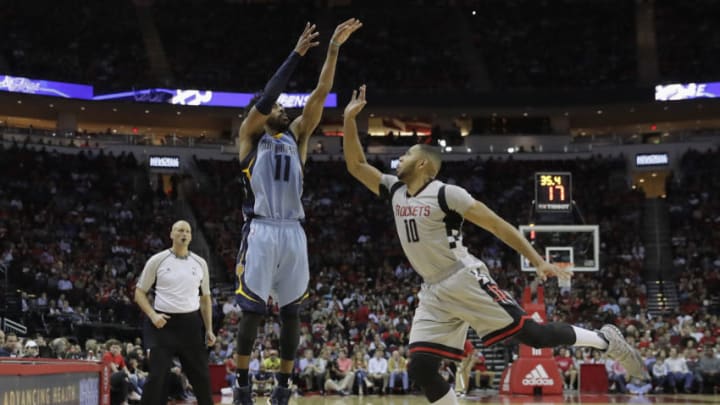Nylon Calculus: The midseason offensive surge in historical context

The first half of the 2016-17 NBA season saw a surge in offensive production. At the player level, we witnessed a dizzying number of 50-point games just as triple-doubles became a seemingly nightly occurrence. At the team level, the Golden State Warriors whipped the ball around the court in search of high-value shots; the Houston Rockets rained threes; and even the Toronto Raptors chased scoring immortality. But offensive growth involved more than just the privileged few. As many observers, including the inimitable Zach Lowe, recently noted, the “explosion” was a leaguewide trend.
The following chart helps put this observation in historical context. Using available data from Basketball Reference, I plotted the league average offensive rating at the midpoint of every season since 1983-84:
Over the past season, offensive rating grew from 105.7 to 108.8. It was the first time that the league experienced a three-point year-to-year improvement in roughly a decade, and it was the first time that it cleared the 108 mark in approximately two decades.
Read More: C.J. McCollum and Damian Lillard have put their own spin on pick-and-rolls
These numbers differ from what Lowe cited and what Basketball Reference has in its League Average page. For the most part, the differences stem from the fact that (a) I followed the Basketball Reference rather than the NBA.com method and (b) I calculated offensive ratings at the point where every team had completed exactly 41 games in a given season. I thought that the latter rationale would allow for better comparisons, since the NBA calendar tends to vary wildly from franchise to franchise and from year to year. Whatever the technical details, the point remains that we just enjoyed one of the most offensively efficient first halves of any season.
While the phenomenon may have been evident, the underlying causes were trickier to discern. A cursory Four Factors analysis revealed minimal movement in leaguewide turnover, rebounding and free-throw numbers, with effective field goal and true shooting percentages inching upward slightly. An additional look at other advanced metrics (posted for all relevant years here) suggested that the types of shots taken by teams might have contributed to the increase in offensive rating.
Specifically, as Lowe reported, three-point shooting continued its ascent. About 31 percent of all field goal attempts came from behind the arc, marking the first time that the league surpassed the 30-percent threshold:
Notably, even as teams took more 3-point shots, they kept up their overall level of accuracy:
3-point field goal percentage hovered in the mid-30s, where it has resided for quite some time now. In other words, increased investment in 3-point shooting has yet to encounter diminishing returns, and this dynamic helped shape the offensive-efficiency growth that we saw in the first half.
It wasn’t an earth-shattering revelation, but it led me to wonder whether the composition of 3-point shots had changed of late. Did teams get substantially better looks behind the arc, enabling both higher volume and stable results? The following table summarizes the relative frequencies and field-goal percentages of different 3-point shot types for full seasons since 2013-14:
I thought perhaps we’d find a greater proportion of catch-and-shoot or corner 3-point attempts, both of which tend to yield higher field goal percentages than their pull-up and above-the-break counterparts. But the numbers have been fairly consistent over the past four years. In fact, there’s actually been a slight bump in shot attempts above the break, along with a mild uptick in pull-up 3-point percentage. These results strike me as temporary blips that are bound to subside by the end of the season. My sense is that, as has been the case in recent years, leaguewide trends in 3-point shooting volume and accuracy will persist with immaterial changes in composition.
Next: How do we define an NBA unicorn?
Of course, many other questions remain unanswered. I’ve yet, for example, considered whether the rise in 3-point shooting can largely be traced to particular teams or players. But, as the NBA turns to the second half of the season, it’ll be fascinating to see whether high levels of offensive efficiency can be maintained.